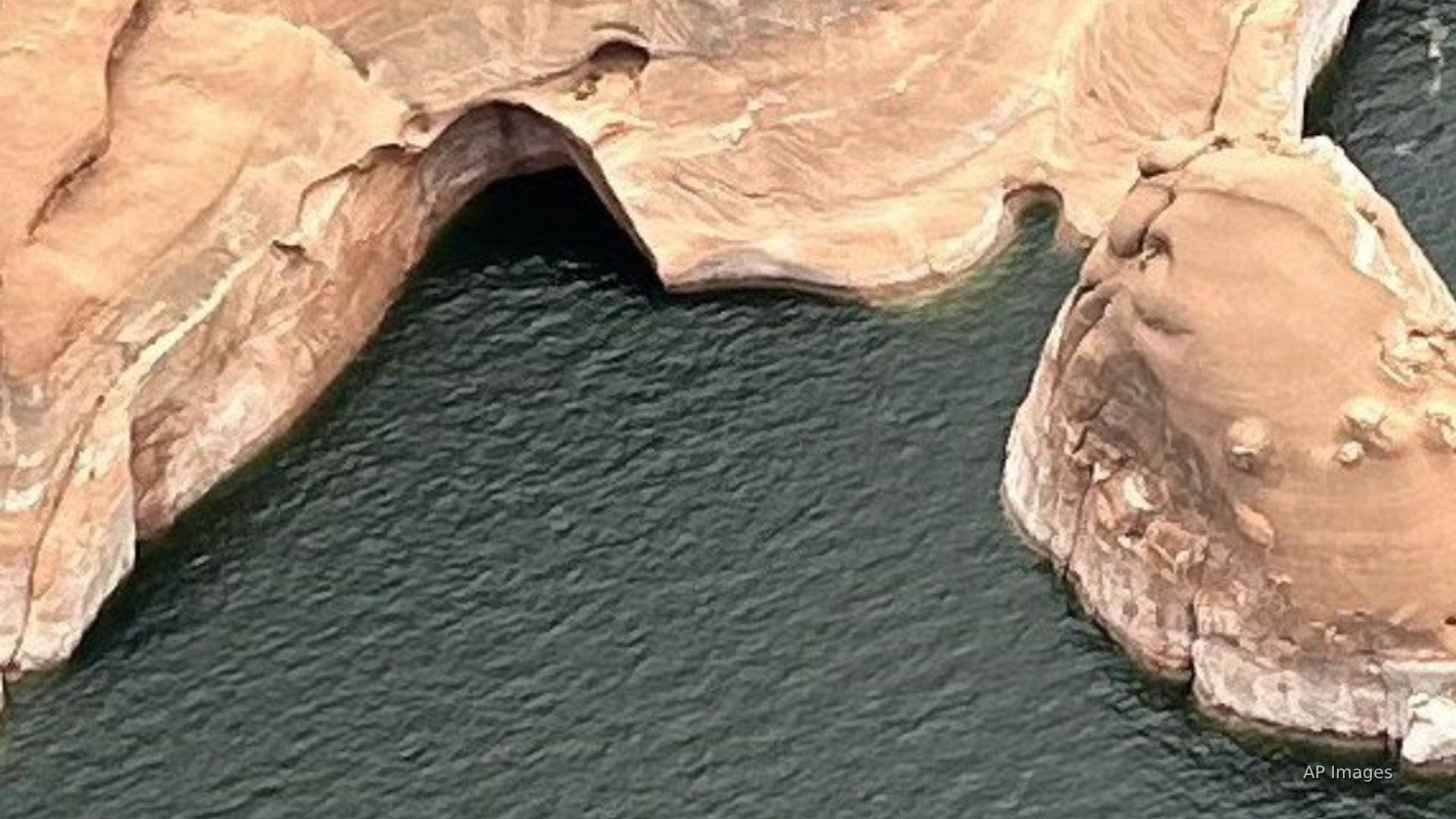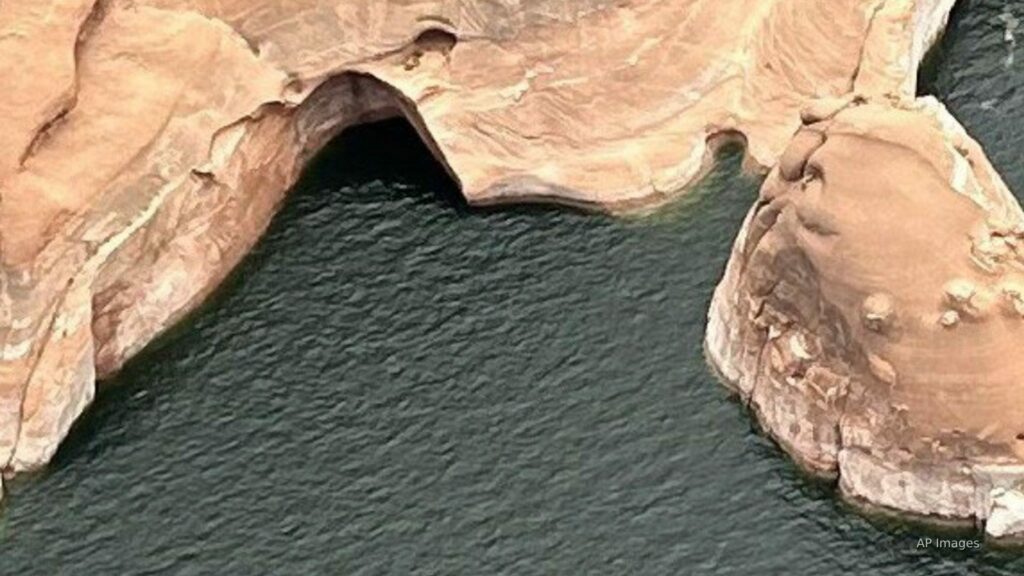
Famous Utah landmark ‘Double Arch’ collapses
A famous, more than 190-million-year-old landmark in Utah is no more. The National Parks Service says the iconic “double arch” collapsed.
Straight Arrow News
The collapse of Double Arch, Utah’s majestic geologic arch, stunned park visitors and deprived the state of a popular natural landmark forever. But geologists say its demise was inevitable.
The impressive structure that drew visitors to Glen Canyon National Recreation Area in southern Utah collapsed last Thursday, the National Park Service announced a day later.
“That’s a natural process in the lifespan of an arch,” said Jeff Moore, a professor of geology at the University of Utah who’s led a team monitoring several arches across Arches National Park beginning in 2013.
The arch was eroded by the elements since its formation around 190 million years ago, the park service said in a statement. Changes in water levels, as well as wind and weather conditions, could also have contributed to the arch’s collapse, according to the park service.
Geologists say erosion of natural arches inevitable
Double Arch showed signs that it was reaching the end of its life cycle when it collapsed, said Grant Willis, retired geologic mapping program manager at the Utah Geological Survey.
“All our arches go through a life cycle,” he said. “That has nothing to do with years. It has to do with the progress of the arch.”
“Certainly, Double Arch was old aged,” he added.
Moore said Double Arch was an “erosional sculpture” by nature.
“They form through erosional processes, and once formed in small increments and small moments, they enlarge and sculpt,” he said. “Sometimes, this sculpture leads to the formation of naturally strong arches … and sometimes it does not.”
Moore said it comes down to the lintel, the arch’s “spanning feature,” or the volume of unsupported rock.
“Those that can, by chance of luck, form into these strong lintels, they survive a longer time than those that form into a less strong geometry,” he said. The Double Arch’s lintel had a flatter line, “not a particularly ideal form for an arch,” he added.
Were humans to blame to for Double Arch’s collapse?
Moore said the constant presence of humans in the arch’s vicinity could have played a role in its collapse. “In essence, none of what we do can be helpful for the structural integrity of an arch,” he said.
While one individual standing over an arch wouldn’t have an immediate effect, human interference can have “cumulative effects over decades,” he added.
Still, he said, it’s hard to determine exactly how much humans contributed to the arch’s demise.
“The arch would have collapsed anyway, at some time,” he said. “Did it collapse earlier because of these human activities? Probably. But how much earlier? I don’t know.”
In some cases, park service officials have taken action to prevent humans from interacting with geological structures. Canyonlands National Park, northeast of Glen Canyon in Utah, for instance, prohibits visitors from climbing or standing on the arches.
Moore also pointed to air restrictions imposed on the area around Rainbow Bridge National Monument in the southern part of the state, one of the world’s largest known natural bridges, that were spurred by studies showing helicopter flybys could have a damaging effect on the arch.
More: US national parks have a troubling history. A new project aims to do better.
Was climate change to blame for Double Arch’s collapse?
Geologists aren’t sure if climate change could have played a role.
“It would be a very tenuous kind of a connection, if there’s any at all,” said Willis.
Arches National Park sees multiple arch collapses in recent years
The Double Arch isn’t the first arch in recent years to succumb to the forces of time.
In 2008, Wall Arch, a natural structure in Arches National Park, dramatically collapsed. A group camping nearby said they heard what they thought was the boom of thunder, even though the skies were clear, according to the park service.
Located on the popular Devils Garden Trail, the arch was known to have precarious support – a slab of rock broke off and fell nearly 40 years earlier, according to the Utah Geological Survey.
Rainbow Arch, near the park visitors’ center, collapsed a decade later in 2018.
On Sept. 1, 1991, park visitors heard cracking sounds coming from Landscape Arch before a huge slab of rock fell, although it stayed standing. At more than 300 feet long, the arch has the longest span of any on the continent.
Willis said Landscape Arch was also aging rapidly, and its collapse could be imminent.
“It’s a very old aged arch,” he said. “I look at that thing, and to me, it’s a wonder it’s still standing at all.”
The constant state of erosion and decay is part of the beauty of these geological structures, Moore said. “These arches are almost always at a critical state of stability,” he said. “Even though its evolution is slow on our human time scale, there they are actively forming and changing.”
“It might have taken 10,000 years to achieve this form. And so, in some cases, I think it’s really lucky that we are able to be here at that moment,” he said.
Cybele Mayes-Osterman is a breaking news reporter for USA TODAY. Reach her on email at cmayesosterman@usatoday.com. Follow her on X @CybeleMO.
Source link : http://www.bing.com/news/apiclick.aspx?ref=FexRss&aid=&tid=66bbbdf5dfb84fc3a931b5143c39c59e&url=https%3A%2F%2Fwww.usatoday.com%2Fstory%2Fnews%2Fnation%2F2024%2F08%2F13%2Fdouble-arch-collapse-utah-geologists%2F74780278007%2F&c=16900699776671963106&mkt=en-us
Author :
Publish date : 2024-08-13 09:08:00
Copyright for syndicated content belongs to the linked Source.
